 Tis the season for running away and running after and running around. There were lots of versions of chase and tag played. We continued to find worms throughout the week, rolling over logs and stumps and blocks and searching any other spot they might hide. We raked up the leaves and sticks and removed some of the toys to tidy up the playground. We played lots of frisbee and soccer, so there are some bruised shins walking around.
Tis the season for running away and running after and running around. There were lots of versions of chase and tag played. We continued to find worms throughout the week, rolling over logs and stumps and blocks and searching any other spot they might hide. We raked up the leaves and sticks and removed some of the toys to tidy up the playground. We played lots of frisbee and soccer, so there are some bruised shins walking around.






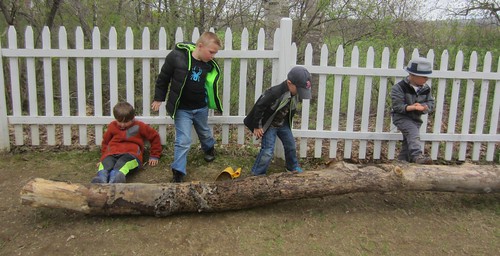

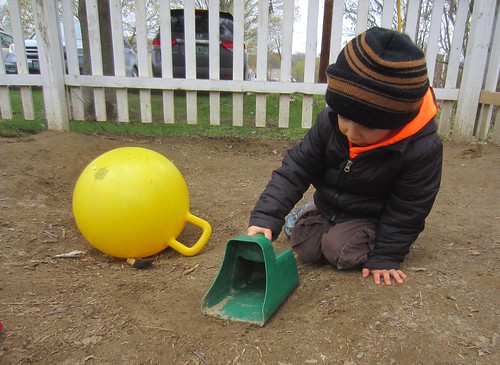




 Monday art was very much a process over product project. The students drew shapes or pictures on blocks of wood, then carefully used hammers to pound nails in around the shapes. They then wrapped string around the nails in a colorful pattern. It was a good lesson on patience, focus, precision, coordination, and control.
Monday art was very much a process over product project. The students drew shapes or pictures on blocks of wood, then carefully used hammers to pound nails in around the shapes. They then wrapped string around the nails in a colorful pattern. It was a good lesson on patience, focus, precision, coordination, and control.
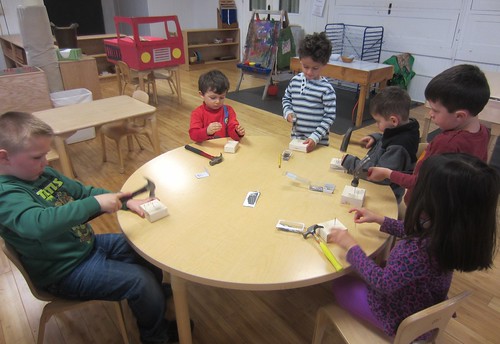
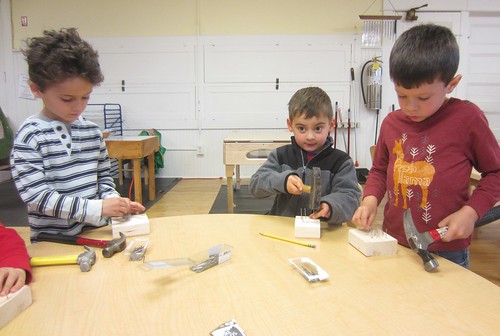


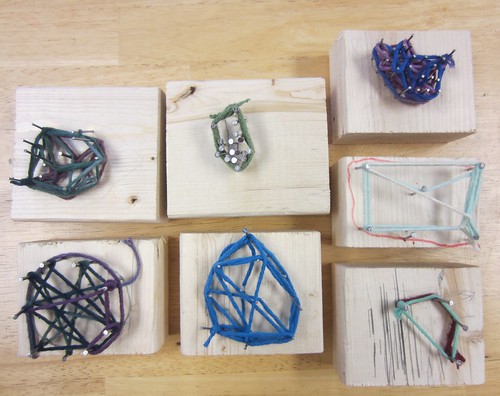 Mixed-up Cat art was introduced to all students for the art activity of the week. The children drew an animal (mostly cats) then drew lines through them to create color division blocks. They produced some pretty fun art, some of which we even got to display for a few days. Mother’s day pictures were also finished up and wrapped.
Mixed-up Cat art was introduced to all students for the art activity of the week. The children drew an animal (mostly cats) then drew lines through them to create color division blocks. They produced some pretty fun art, some of which we even got to display for a few days. Mother’s day pictures were also finished up and wrapped.



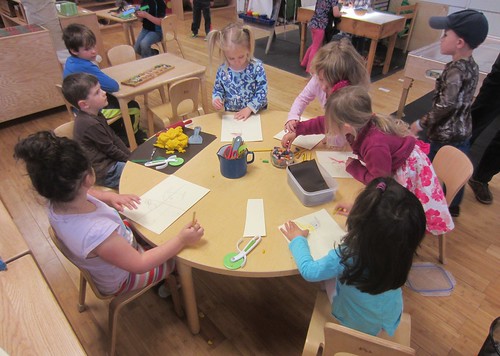
 Work continued on the Emergency Services Station. It is coming along slowly but surely. A fire hose was brought in. The vehicles are almost completed. A house with fire was erected. Medical supplies were brought out (thank you Shannon family!) and put to use. The children continue to brainstorm ideas, and we will continue to assist them in their implementation.
Work continued on the Emergency Services Station. It is coming along slowly but surely. A fire hose was brought in. The vehicles are almost completed. A house with fire was erected. Medical supplies were brought out (thank you Shannon family!) and put to use. The children continue to brainstorm ideas, and we will continue to assist them in their implementation.

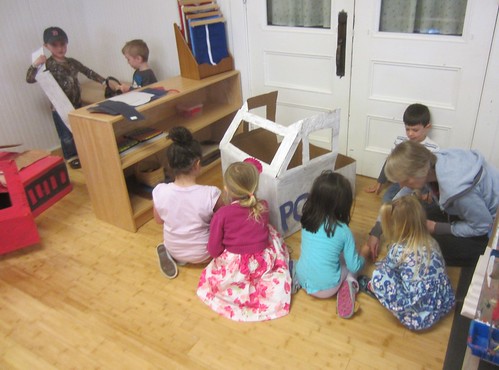


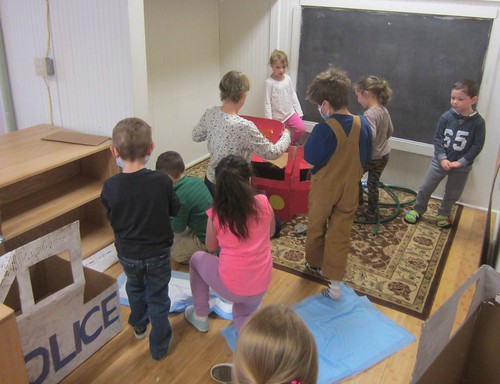

 Our study of the continent of Australia began with an exploration of the many animals that are unique to this continent and the varied climates, from tropical to desert. Some of these unique animals include a group of marsupials, including wombats, Tasmanian devils, koalas (which are NOT bears), kangaroos, and wallabies. There are also flightless birds, including emus, cassowaries and kiwis. There are platypus and echidna, the only egg laying mammals, frilled lizards, leafy sea dragons, and wobbegongs. We also learned that some outside species that were introduced, including camels and dogs (dingos), have become feral and roam wildly across the land. We learned that a large section of the continent is very sparsely inhabited by humans, and this area is called the outback.
Our study of the continent of Australia began with an exploration of the many animals that are unique to this continent and the varied climates, from tropical to desert. Some of these unique animals include a group of marsupials, including wombats, Tasmanian devils, koalas (which are NOT bears), kangaroos, and wallabies. There are also flightless birds, including emus, cassowaries and kiwis. There are platypus and echidna, the only egg laying mammals, frilled lizards, leafy sea dragons, and wobbegongs. We also learned that some outside species that were introduced, including camels and dogs (dingos), have become feral and roam wildly across the land. We learned that a large section of the continent is very sparsely inhabited by humans, and this area is called the outback.







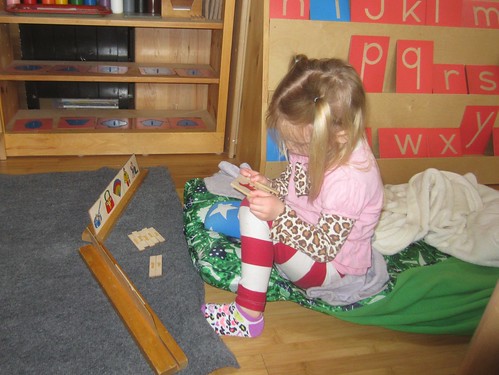

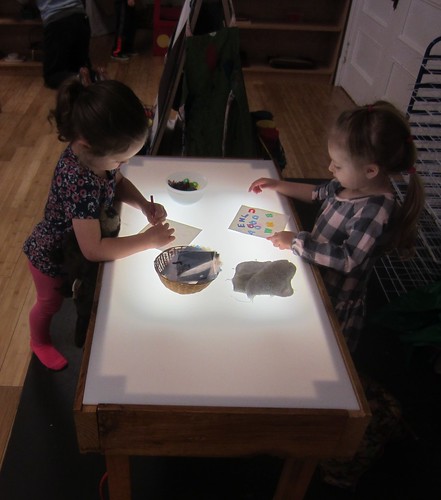
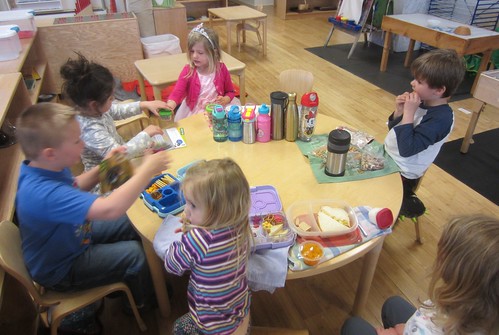




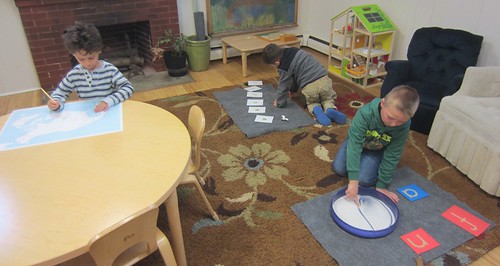


 Dr. Debra came for her final health presentation on Thursday to teach us about the importance of sunscreen and why we use it. We discussed how the sun can burn our skin, which damages it, and the children shared their experiences and observations of sun damage, such as red, painful burns that cause dry and peeling skin. Dr. Debra did an experiment with us, where we observed UV beads that were colorless inside, but when exposed to the sunshine became bright pink and purple. In one bag, the beads were unprotected and changed color. In a second bag they were coated with sunscreen and they did not change color.
Dr. Debra came for her final health presentation on Thursday to teach us about the importance of sunscreen and why we use it. We discussed how the sun can burn our skin, which damages it, and the children shared their experiences and observations of sun damage, such as red, painful burns that cause dry and peeling skin. Dr. Debra did an experiment with us, where we observed UV beads that were colorless inside, but when exposed to the sunshine became bright pink and purple. In one bag, the beads were unprotected and changed color. In a second bag they were coated with sunscreen and they did not change color.
 For Science the Friday students learned about the heart, a most important muscular organ, which continuously pumps blood to the lungs to get oxygen, then out to all the parts of the body. We read The Body – Heart and learned all about how the heart works and why it is important. We located our hearts, then felt and listened to our heart beats with hands and stethoscopes. We did some dancing and jumping and discovered that our hearts beat faster when we exercise. The children then became the heart, lungs, head, legs, hands, and blood flowing through veins and arteries. The heart person pushed the blood to the lungs, where they became oxygen rich, then returned to the heart, who then pushed them out to the head, feet, and arms, where they exchanged their oxygenated blood for deoxygenated blood, then returned to the heart to continue the cycle. We decided it was still a pretty tricky process to understand after completing several rounds.
For Science the Friday students learned about the heart, a most important muscular organ, which continuously pumps blood to the lungs to get oxygen, then out to all the parts of the body. We read The Body – Heart and learned all about how the heart works and why it is important. We located our hearts, then felt and listened to our heart beats with hands and stethoscopes. We did some dancing and jumping and discovered that our hearts beat faster when we exercise. The children then became the heart, lungs, head, legs, hands, and blood flowing through veins and arteries. The heart person pushed the blood to the lungs, where they became oxygen rich, then returned to the heart, who then pushed them out to the head, feet, and arms, where they exchanged their oxygenated blood for deoxygenated blood, then returned to the heart to continue the cycle. We decided it was still a pretty tricky process to understand after completing several rounds.


 One of our friends brought eggs to show us how he taps holes in the ends then blows them out. Everyone was very interested and excited to have him blow out an egg for them, which we washed out and will paint once dry.
One of our friends brought eggs to show us how he taps holes in the ends then blows them out. Everyone was very interested and excited to have him blow out an egg for them, which we washed out and will paint once dry.
